We remove the power steering pump when dismantling the engine or to replace it
Remove the accessory drive belt (article - Replacing the accessory drive belt Nissan Almera)

Removing the fuel rail protection
Pear or syringe pump out the fluid from the power steering reservoir
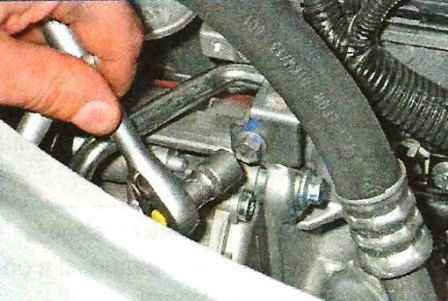
With a head of 10, we unscrew the bolt securing the holder of the discharge tube

With a head of 13, we unscrew the bolt of the clamp that attracts the discharge pipe to the cylinder block

We unscrew the fitting of the discharge pipe with a key of 17, holding the fitting with a key of 27

Remove the tube fitting from the hole of the pump fitting and remove the tube from the pump housing
A rubber ring is installed in the joint, you need to inspect it and replace it if damaged
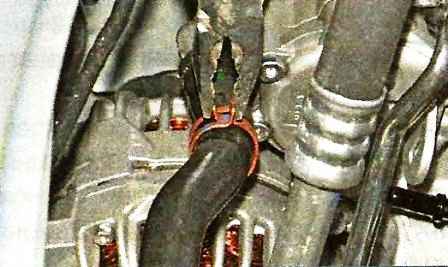
We compress the clamp of the filling line with pliers and slide the clamp along the hose
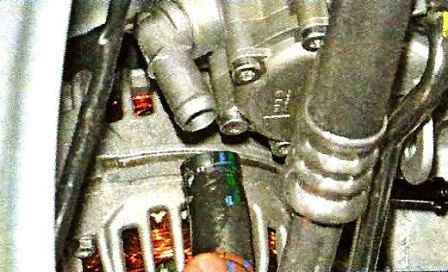
Remove the hose from the pump nozzle.
Insert plugs of a suitable size into the holes of the tube, hose and pump fitting
Turning the pump pulley, align the hole in the pulley with the head of one of the three bolts securing the pump to the engine bracket

With a 10 head, unscrew the bolt securing the pump to the engine bracket
Also unscrew the other two bolts
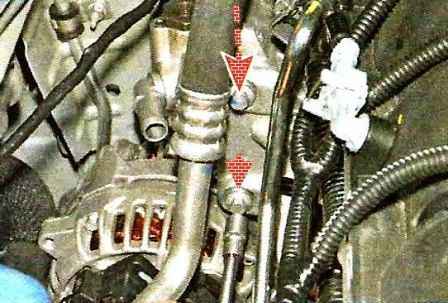
With a 10 head, unscrew the two pump mounting bolts on the opposite side of the bracket
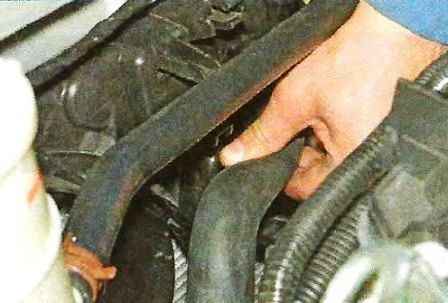
Remove the radiator inlet hose from the holder on the fan casing and take it down.
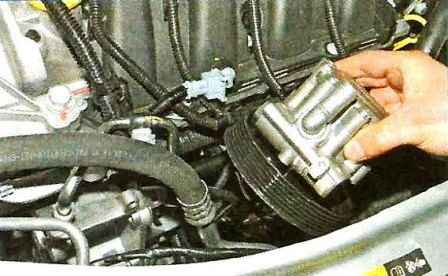
Having inserted a screwdriver between the pump housing and the motor bracket, we press the pump housing away from the bracket and remove the pump
Install the power steering pump in the reverse order.
We tighten the pump mounting bolts with a torque of 21 Nm
Pumping the power steering system
Bleeding the power steering system is necessary to remove air that has entered the hydraulic drive during the repair or replacement of individual components of the system.
Air trapped in the hydraulic drive causes a decrease in the effectiveness of the power steering.

To bleed the hydraulic system on an idle cold engine, unscrew the cap of the power steering reservoir
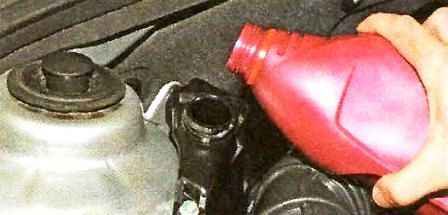
Adding liquid to the tank

Top up to the MINI mark
We start the engine and at idle, check the fluid level in the tank.
When the liquid level drops, add it to the MINI mark.
Several times we turn the steering wheel left and right until it stops, making sure that the liquid level in the tank is near the MINI mark, and if necessary, add liquid.
We return the steered wheels to the position of the rectilinear movement of the car and let the engine run for another two or three minutes.
Then again turn the steering wheel left and right until it stops and, if necessary, add liquid to the tank to the MINI mark.
Stop the engine and check the fluid level in the tank again.
After warming up and stabilizing the temperature of the working fluid, its level should be at the MAXI mark, and in a cold state it should not fall below the MINI mark.
Close the cover of the power steering reservoir.
Normal operation of the hydraulic booster should not be accompanied by increased noise, and no air bubbles should be visible in the liquid.
The effort on the steering wheel with the engine running should be significantly less than when the engine is not running.
The noise of the power steering when the front wheels are turned to the limit is not a malfunction.
NISSAN Power Steering Fluid or equivalent is poured into the power steering reservoir in the amount of 1.0 liters.
Removing and installing the power steering pump pulley
Remove the pump as described above
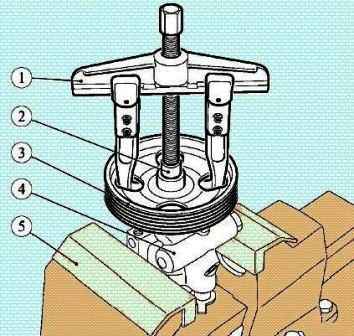
We install the power steering pump in a vise with soft jaws with the pulley up
We install a stop with a diameter of 17 mm on the pump shaft
We install a universal two-jaw puller in the windows of the pump pulley and remove the pulley
Pulley installation
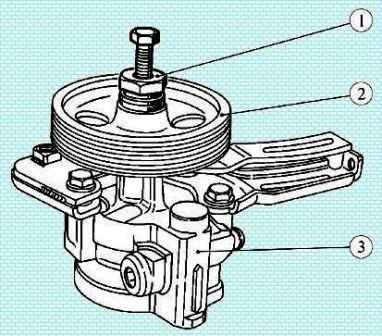
Using a tool, we press the pulley
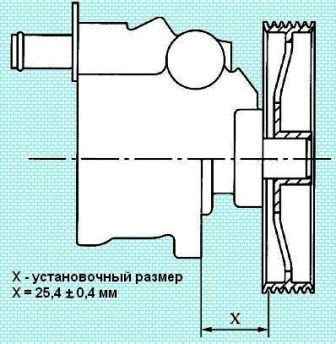
When pressing the pulley, the installation dimension must be ensured.
Before pressing on, the pulley seating surface and the threaded surface of the force screw of the pulley press tool must be lubricated.





